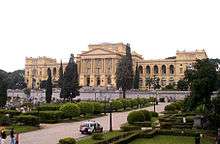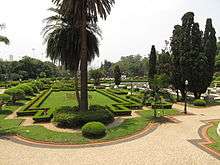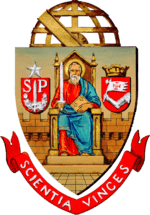Museu Paulista
 | |
| Established | 1890 |
|---|---|
| Location | Ipiranga district, São Paulo, Brazil |
| Coordinates | 23°35′08″S 46°36′35″W / 23.585608°S 46.609678°W |
| Type | History and art museum |
| Director | Cecilia Helena Lorenzini de Salles Oliveira |
| Curator | Vânia Carneiro de Carvalho |
| Website | http://www.mp.usp.br |

The Museu Paulista of the University of São Paulo (commonly known in São Paulo and all Brazil as Museu do Ipiranga) is a Brazilian history museum located near where Emperor Pedro I proclaimed the Brazilian independence on the banks of Ipiranga brook in the Southeast region of the city of São Paulo, then the "Caminho do Mar," or road to the seashore. It contains a huge collection of furniture, documents and historically relevant artwork, especially relating to the Brazilian Empire era.
The most famous work of art in the collection is the 1888 painting Independência ou Morte (Independence or Death) by Pedro Américo.
A few months after the Brazilian Declaration of Independence, people started to suggest a monument on the site where the declaration took place, although they were not sure about what sort of memorial construction to build. In 1884, Italian architect Tommaso Gaudenzio Bezzi, who was hired to develop the project, chose to build an eclectic-styled construction similar to the French Palace of Versailles with impressive and perfectly manicured gardens and fountain.
Design and Construction
In 1884, Italian architect Tommaso Gaudenzio Bezzi was chosen to design a monumental building to be built at the place where Brazilian Independence would have been proclaimed. The 123m-long palace was inspired in a Renaissance palace and is considered an example of Eclectic architecture. The museum was opened to the public on September 7, 1895, six years after the Proclamation of the Republic.[1] In 1909, Belgian landscape designer Arsenio Puttermans projected the gardens around the main building, which were later redesigned by landscape designer Reinaldo Dierberger in the 1920s.
See also
External links
- Official website (Portuguese)
References
- ↑ "History of the Museu Paulista (Paulista Museum)". Museu Paulista. Universidade de São Paulo. Retrieved 2015-01-03.
| Wikimedia Commons has media related to Museu Paulista. |
